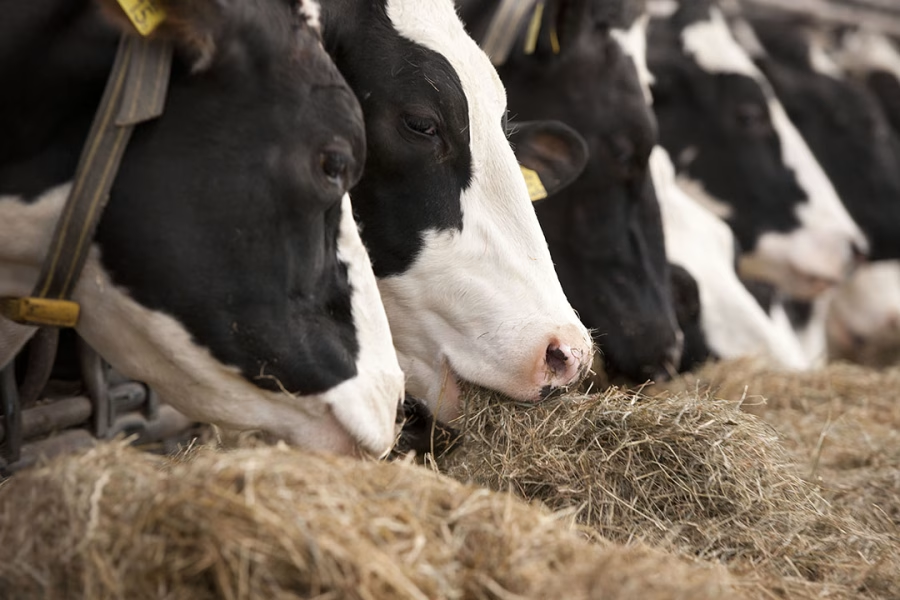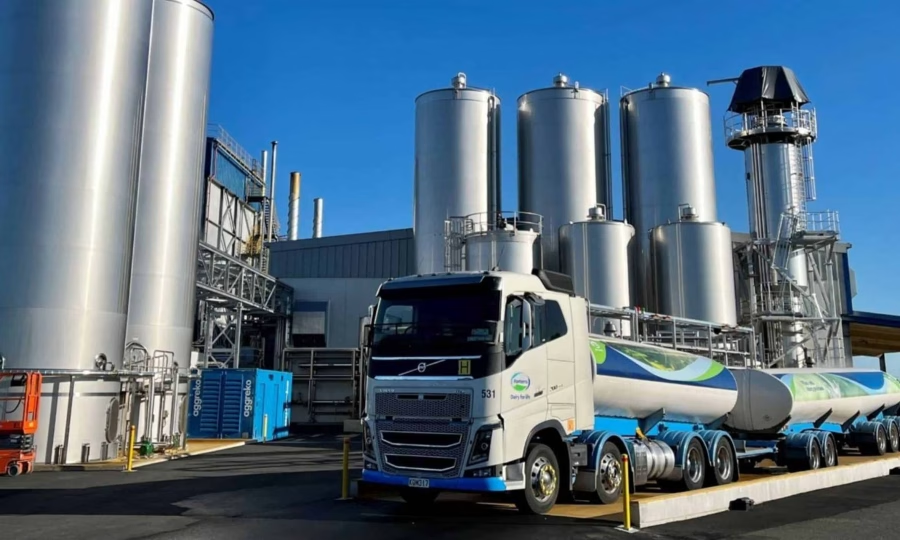Is the global dairy market set for a comeback? Discover how rising prices and shifting supply dynamics could impact the industry through 2024.

The global dairy market is at a pivotal point, transitioning towards higher prices in 2024. Rabobank’s latest report indicates that dairy commodity prices have bottomed out and are set to rise. By the end of 2023, the market faced limited new milk supply and sluggish demand, resulting in soft commodity pricing due to weak fundamentals.
“2023 was marked by soft dairy commodity pricing from weaker fundamentals,” says Michael Harvey, senior dairy analyst at Rabobank. Despite a brief resurgence, global supply growth faltered due to lower milk prices, high costs, and weather disruptions. The global market anticipated a Chinese rebalancing, only to see significant import shortfalls for the second year.
“There is growing evidence that the bottom in the dairy commodity markets has passed, and prices are likely to climb through 2024,” Rabobank’s report notes, offering a cautiously optimistic outlook.
“There is growing evidence that the bottom in the dairy commodity markets has passed, and prices are likely to climb through 2024,” Rabobank’s report notes, offering a cautiously optimistic outlook.
A Year of Turbulence: Factors Contributing to the 2023 Global Dairy Market Slump
2023 witnessed a convergence of challenges that softened global dairy commodity prices. Firstly, limited milk supply growth defined the year, as brief surges were hindered by falling milk prices and rising operational costs. Additionally, severe weather disruptions worsened supply chain inefficiencies, affecting production in crucial dairy regions.
Higher input costs, from feed to energy, strained dairy farms worldwide, making it difficult to stay profitable. Unpredictable environmental conditions further challenged the agricultural sector‘s resilience.
The market also felt the impact of China’s reduced dairy imports. As the largest dairy importer, China’s decreased demand created significant ripples. The nation’s internal oversupply and economic slowdown led to a substantial drop in dairy imports for the second consecutive year.
These elements not only drove down dairy commodity prices but also brought increased uncertainty and volatility, setting a cautious yet hopeful tone for 2024.
Navigating Uncertainty: Rabobank’s Analysis Signals Renewed Optimism for the Dairy Market’s Resurgence
Rabobank’s latest analysis offers a hopeful outlook for the global dairy market, indicating that the worst is over for dairy commodity prices. The report predicts a gradual price rise through 2024, promising stability and growth for an industry struck by recent challenges. Farmers and producers, who have faced fluctuating prices and high costs, can now anticipate a more favorable economic environment. Thus, the story of the global dairy market is evolving from turmoil to resurgence, paving the way for potential growth and new opportunities.
China’s Stabilizing Influence: Opportunities for Global Dairy Importers Amid Steady Demand
China has long been a critical player in the global dairy market, significantly influencing commodity prices with its import patterns. In 2024, China’s import volume is expected to stabilize, a contrast to the substantial shortfalls of the past two years. This steady demand could reduce some of the erratic fluctuations in global markets.
This stabilization provides other importers with a chance to build their stocks. With China’s steady demand, nations might acquire dairy commodities at competitive prices, strengthening their reserves without the pressure of Chinese-driven demand surges. As the market transitions, global importers must keenly observe these signals to manage stock levels strategically, potentially easing the volatility experienced in recent years.
Price Volatility: A Multidimensional Challenge for 2024
Price volatility will be a significant challenge in 2024, influenced by various factors. Geopolitical instability, with regional conflicts and trade disputes, can disrupt supply chains and affect dairy markets through tariffs and export bans.
Energy market fluctuations, driven by changing oil prices and the shift to renewable sources, directly impact dairy production and distribution costs. Irregular energy pricing can lead to unpredictable dairy commodity prices.
Weak global economic conditions also play a role. Economic sluggishness reduces consumer purchasing power and government budgets, affecting discretionary spending on premium dairy products and complicating dairy pricing.
Inflationary pressures further complicate the picture. Rising raw materials, labor, and transportation costs may force dairy producers to increase prices. However, if consumer demand doesn’t support these hikes, the market could experience high production costs and low retail prices.
Navigating the dairy market in 2024 will require careful monitoring of these risks. Industry stakeholders must remain vigilant and develop strategies to mitigate geopolitical, energy, and economic disruptions to maintain stability.
Outlook for Grain and Oilseed Prices: A Double-Edged Sword for Dairy Farmers in 2024
Rabobank’s 2024 forecast suggests a slightly softer outlook for grain and oilseed prices. This is attributed to an expected increase in global feed grain supply, which is favorable for dairy farm margins. Lower feed grain costs are anticipated to support dairy farmers in a volatile market. However, some commodities like palm oil may have more bullish outlooks, potentially adding cost pressures.
Reduced grain and oilseed prices can enhance farmgate margins by lowering a significant variable cost in dairy farming. This relief is vital as dairy producers deal with high operational expenses and fluctuating milk prices. By easing some financial burdens, better feed cost prospects could boost profitability and stabilize production despite uncertain commodity pricing and geopolitical risks.
Strategic Shifts in the EU Dairy Market: Anticipating Milk Price Dynamics and Export Challenges for 2024
Looking to the first half of 2024, the EU dairy market faces complex milk price dynamics and export challenges. Rabobank expects EU milk prices to rise, driven by recent gains in European dairy commodity prices and lower stock levels. Notably, several major dairy processors in northwest Europe have already increased milk prices for late 2023.
However, EU milk deliveries are forecast to decline by 0.5% year-on-year in Q1 and 0.4% in Q2 of 2024, indicating structural weaknesses. The second half of 2024 might see a slight decline of 0.2% year-on-year, suggesting a slow recovery.
EU export price competitiveness remains a concern due to high farmgate milk prices compared to global competitors. Despite these challenges, year-on-year volume growth is expected for Q4 2024, although supply limitations and a modest domestic demand recovery could impact results.
The US Dairy Market’s Path to Recovery: Forecasted Growth and Strategic Adjustments for 2024
The US dairy market is set for a modest recovery in 2024, with a predicted 1% growth in milk production year-on-year. Despite the herd size dropping to 9.37 million in October 2023, the lowest since January 2022, gradual expansion is expected throughout 2024. This growth aims to meet rising domestic and global demand.
Rabobank projections for first half 2024 price Class III milk at $17.78/cwt and Class IV at $19.24/cwt. Full-year estimates are $18.38/cwt for Class III and $20.37/cwt for Class IV, with Class IV consistently priced higher. These forecasts reflect a market transitioning through cautious optimism and strategic adjustments.
New Zealand and Australia: Navigating Production Declines and Export Challenges in 2024
New Zealand’s dairy sector faces a challenging outlook, with full-season production forecasted to decline by up to 2% year-on-year beyond the first half of 2024. This outlook is influenced by cautious budgeting, which affects farming practices and potentially impacts milk flows in the latter half of the season. Animal health management will be essential for a robust start to the 2024-2025 season, but intensified milking efforts due to lower forecasted milk prices could strain herd health.
Despite record farmgate milk prices buffering the sector from global fluctuations in Australia, dairy exports have significantly declined. Export volumes dropped by more than 13% year-on-year in the first three months of the new season, with notable reductions in milk powder ingredients, bulk cheese, and butter. The liquid milk segment also saw a 30% year-on-year decrease. A tight domestic milk supply and high farmgate milk prices relative to significant competitors partly explain this decline.
Additionally, Australia’s butter and cheese imports increased by 43% and 21% year-on-year, respectively. Domestic purchasing behaviors are shifting due to an income squeeze, with dairy purchases outperforming other discretionary food items but still showing some volume declines. The stabilization of Australia’s exportable surplus over 2023-2024 depends on a recovery in milk supply, though export competitiveness remains an immediate concern.
The Bottom Line
The global dairy market is cautiously moving towards recovery in 2024. Rabobank’s observations note an upward price trend, following the softness seen in 2023. Modest milk supply growth, better feed costs, and improved demand, particularly from China, foster this positive outlook.
Significant factors include stabilizing China’s import volume, strategic shifts in the EU, forecasted US milk production growth, and adjustments in New Zealand and Australia. Potential volatility due to geopolitical instability, energy market fluctuations, and macroeconomic uncertainties are also acknowledged. However, with strategic adjustments and risk mitigation, the sector is prepared for a steady recovery.
While challenges remain, signs of recovery are evident. Stakeholders must stay vigilant, adapt strategies, and leverage insights to navigate the complexities of 2024, ensuring resilience and growth in a dynamic market.
Key Takeaways:
- The global dairy market is transitioning from a period of low commodity prices with a projected upward trend through 2024.
- China’s steady import demand is crucial for driving price rallies in the Oceania region, and stabilized import volumes are expected in 2024.
- Price volatility is anticipated due to geopolitical instability, volatile energy markets, and weak macroeconomic conditions.
- A softer grain and oilseed price outlook will improve dairy farm margins globally.
- EU milk prices are anticipated to strengthen in early 2024, yet export competitiveness may remain challenging due to high farmgate milk prices.
- US dairy production shows a slow yet steady growth forecast with specific price estimates for Class III and IV milk segments.
- New Zealand dairy production is expected to decline, while Australia faces reduced export competitiveness amid high domestic farmgate milk prices.
- Overall, the 2024 outlook indicates cautious optimism with potential recovery driven by strategic shifts and stabilizing factors in critical markets.
Summary:
The global dairy market is facing a critical point, with Rabobank’s report indicating that dairy commodity prices are set to rise in 2024. By the end of 2023, the market faced limited new milk supply and sluggish demand, leading to soft commodity pricing. Despite a brief resurgence, global supply growth faltered due to lower milk prices, high costs, and weather disruptions. The market anticipated a Chinese rebalancing but saw significant shortfalls in imports for the second year. Rabobank’s analysis suggests a gradual rise in prices through 2024, promising stability and growth for the industry. However, price volatility will be a significant challenge in 2024, influenced by geopolitical instability, energy market fluctuations, weak global economic conditions, and inflationary pressures.














